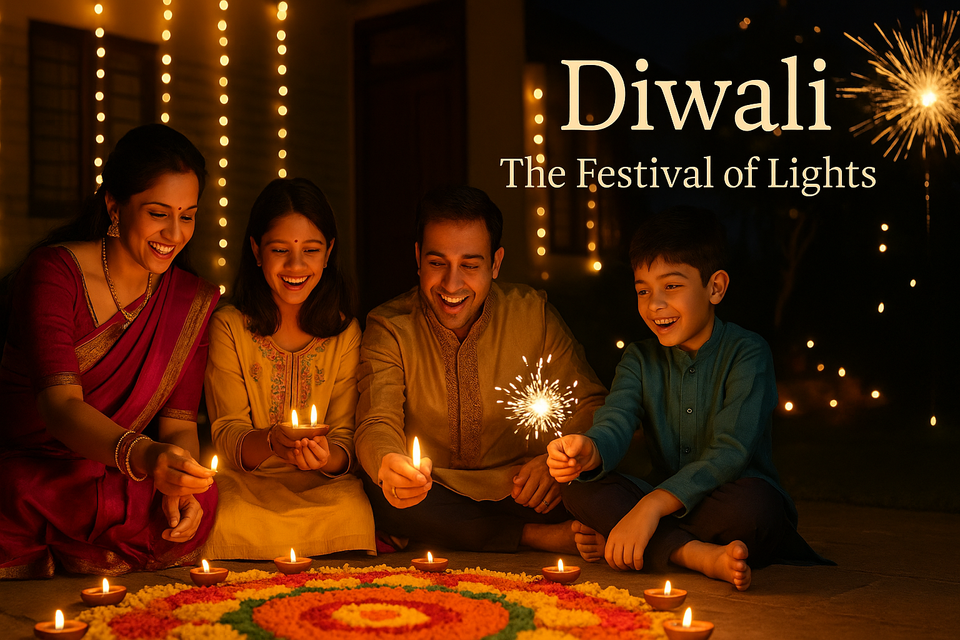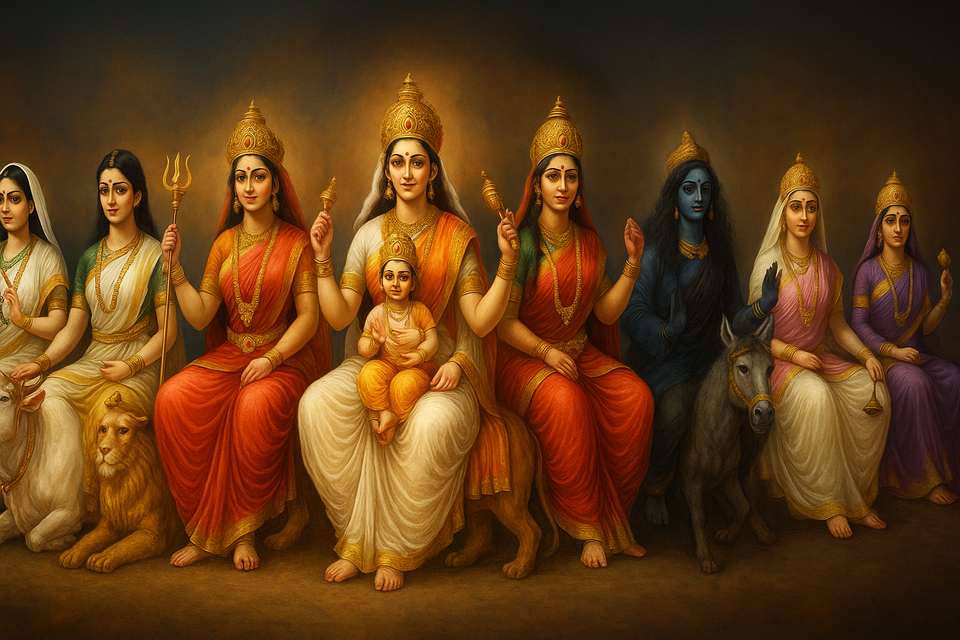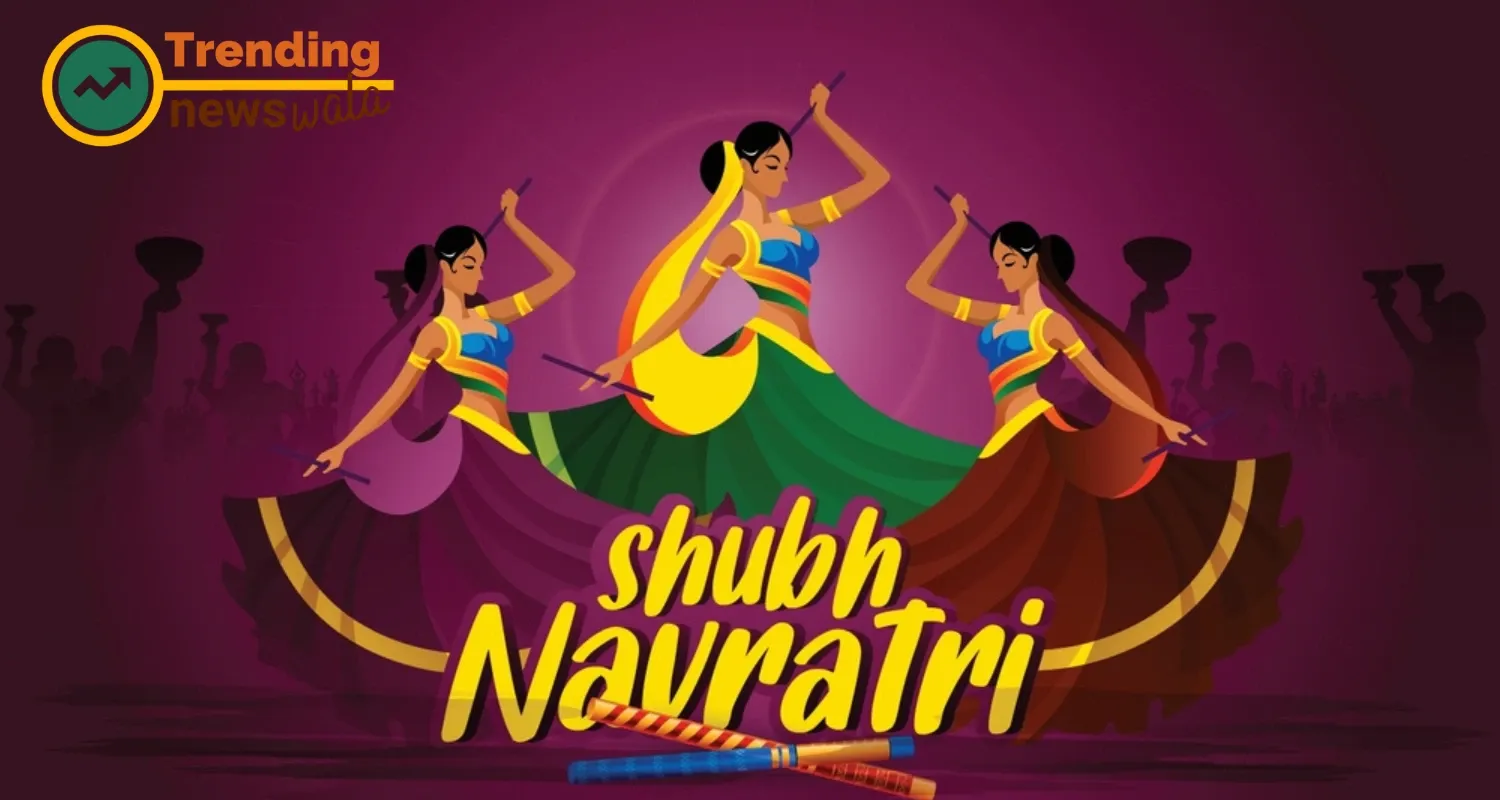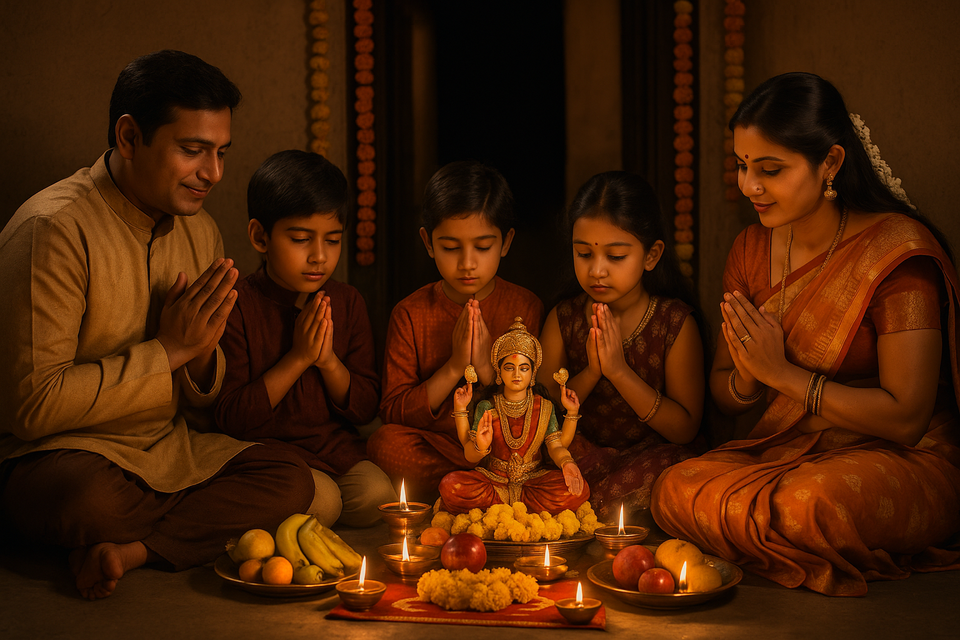Chhath Puja: A Sacred Festival Honoring the Sun God 🌞
Celebrate Chhath Puja 2025, honoring the Sun God! Learn its history, rituals like arghya, and how to join vibrant festivities in Bihar. Embrace devotion and nature, and gratitude! 🙏
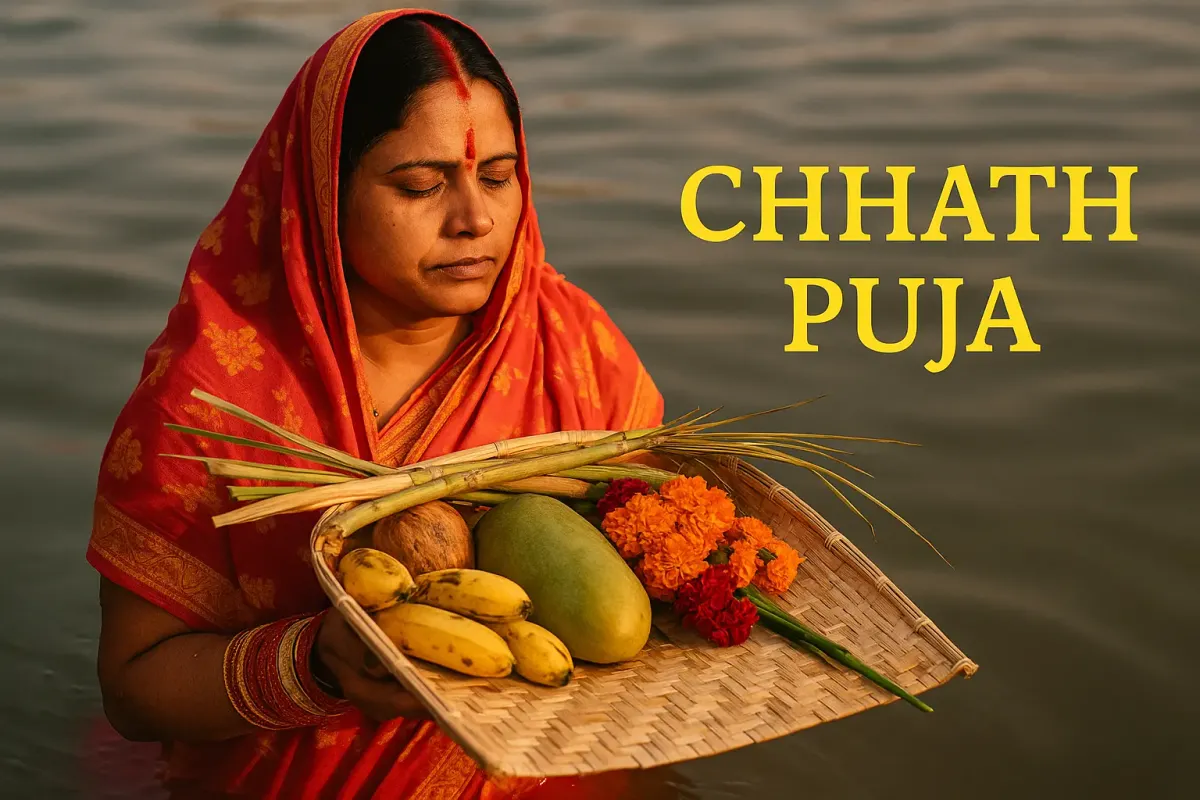
Chhath Puja, a revered Hindu festival, is a vibrant celebration dedicated to the Sun God (Surya) and his consort Usha or Chhathi Maiya, the deity of energy and vitality. Observed primarily in Bihar, Jharkhand, Uttar Pradesh, and parts of Nepal, Chhath Puja is a four-day ritual held on the sixth day (Shashthi) of the Kartik month, typically in October or November, shortly after Diwali. Known for its rigorous fasting, riverbank prayers, and offerings of arghya to the rising and setting sun, Chhath Puja embodies devotion, gratitude, and environmental harmony.
For a deeper understanding of India’s rich festival traditions, explore Ancient Festivals of India.
Historical Background of Chhath Puja 📜
The origins of Chhath Puja are steeped in ancient Hindu mythology and Vedic traditions, with references found in texts like the Rigveda, which extols the Sun God’s life-giving energy. According to legend, Chhath Puja traces back to the Mahabharata era, when Draupadi and the Pandavas performed sun worship to overcome hardships, establishing the festival’s spiritual roots. Another tale links Chhath Puja to Lord Rama and Sita, who offered prayers to Surya upon returning to Ayodhya after exile, reinforcing its historical significance.
Archaeological evidence, such as sun worship motifs in ancient temples, suggests Chhath Puja predates recorded history, practiced by agrarian communities in the Gangetic plains. During the Mauryan and Gupta periods (4th century BCE–6th century CE), sun worship gained prominence, with Chhath Puja evolving into a structured festival. By the medieval period, folk traditions in Bihar and Purvanchal solidified its unique rituals, such as fasting and riverbank offerings.
Today, Chhath Puja is a major cultural and spiritual event, drawing millions to riverbanks like the Ganga in Patna and Yamuna in Delhi. Its historical legacy lies in its enduring connection to nature worship and community resilience. 🌿
Mythological and Spiritual Significance of Chhath Puja ✨
Chhath Puja holds profound spiritual and mythological importance, embodying themes of gratitude, purification, and divine connection. Here are key aspects of its significance:
- Worship of Surya: Chhath Puja honors the Sun God as the source of life, energy, and prosperity, with devotees offering arghya to seek blessings for health and abundance.
- Reverence for Chhathi Maiya: Chhathi Maiya, believed to be Surya’s sister or the primal energy (Prakriti), is worshipped during Chhath Puja for protection and family well-being.
- Purification and Penance: The rigorous fasting and rituals of Chhath Puja cleanse the body and soul, fostering spiritual discipline and devotion.
- Family Prosperity: Devotees, especially women, perform Chhath Puja to pray for their children’s longevity, health, and success, reflecting familial love and sacrifice.
- Environmental Harmony: By worshipping at rivers and natural water bodies, Chhath Puja emphasizes humanity’s bond with nature, promoting ecological respect.
The spiritual essence of Chhath Puja lies in its celebration of life’s sustenance through sun worship, as encapsulated in the folk saying: “Surya’s light brings Chhath’s might.” 🌼
Cultural Importance of Chhath Puja 🎭
Chhath Puja is a cultural milestone that showcases the rich heritage of Eastern India through devotion, folk music, and community unity. Its cultural significance includes:
- Folk Music and Songs: Devotees sing traditional Chhath songs, such as “Uga Ho Suruj Dev” and “Kanchahi Bans Ke”, during Chhath Puja, preserving Bhojpuri and Maithili musical traditions.
- Culinary Arts: Special offerings like thekua (wheat cookies), kheer, and fruits are prepared during Chhath Puja, shared as prasadam to foster communal bonding.
- Artistic Expression: Riverbanks are adorned with bamboo baskets (soop) and rangoli, reflecting local craftsmanship during Chhath Puja celebrations.
- Community Spirit: Chhath Puja unites diverse communities, with neighbors collaborating to set up ghats and share resources, strengthening social ties.
- Economic Impact: The festival boosts local economies, with markets bustling for bamboo, clay pots, and festive foods during Chhath Puja preparations.
The cultural vibrancy of Chhath Puja lies in its blend of spirituality and festivity, making it a cherished celebration across India and beyond. 🌈
For insights into India’s sacred sites, visit Shiva Temples In India.
Rituals and Traditions of Chhath Puja 🛕
Chhath Puja spans four days, each with distinct rituals that emphasize devotion, discipline, and gratitude. Here’s a detailed look at the key rituals of Chhath Puja:
1. Nahay Khay (Day 1) 🛁
On the first day, devotees take a holy dip in a river or pond, clean their homes, and prepare a simple meal of dal, chawal (rice), and kaddu sabzi (pumpkin curry). This purifies the body and mind for Chhath Puja.
2. Kharna (Day 2) 🍚
The second day involves a day-long nirjala (waterless) fast, broken in the evening with kheer and roti offered to Chhathi Maiya. Families share prasadam, praying for strength during Chhath Puja.
3. Sandhya Arghya (Day 3) 🌅
On the third day, devotees fast without water and prepare offerings like thekua, fruits, and sugarcane in bamboo soops. At sunset, they offer arghya to the setting sun at riverbanks, chanting mantras during Chhath Puja.
4. Usha Arghya (Day 4) 🌄
The final day begins before dawn, with devotees offering arghya to the rising sun at ghats, concluding the 36-hour fast. They break the fast with prasadam and ginger water, celebrating the completion of Chhath Puja.
5. Riverbank Worship 🙏
Devotees, mostly women, stand in knee-deep water during arghya rituals, offering milk, water, and prayers to Surya and Chhathi Maiya, a hallmark of Chhath Puja.
6. Preparation of Thekua 🍪
Thekua, a deep-fried wheat cookie made with jaggery, is a sacred offering during Chhath Puja, prepared with devotion and shared as prasadam.
7. Folk Songs and Chants 🎶
Families sing devotional Chhath songs throughout Chhath Puja, creating a spiritual ambiance at ghats and homes, with lyrics praising Surya and Chhathi Maiya.
8. Charity and Community Service 🤝
Devotees distribute prasadam and essentials to the needy during Chhath Puja, embodying the festival’s ethos of compassion and sharing.
9. Eco-Friendly Practices 🌱
Recent Chhath Puja celebrations emphasize biodegradable soops and clean ghats, reflecting environmental consciousness to protect rivers like the Ganga.
These rituals make Chhath Puja a profound celebration of devotion, nature, and community harmony. 🎊
Celebrations Across India and Beyond 🌍
Chhath Puja is celebrated with immense fervor in Bihar, Jharkhand, Uttar Pradesh, and Nepal, with unique regional variations, and resonates globally among diaspora communities. Here’s how it’s observed:
- Bihar: Patna’s Ganga ghats, like Gai Ghat and Collectorate Ghat, are epicenters of Chhath Puja, with over 5 million devotees attending in 2024. The state government ensures robust arrangements.
- Jharkhand: Ranchi and Jamshedpur host vibrant Chhath Puja celebrations at rivers and artificial ponds, with folk songs echoing through ghats.
- Uttar Pradesh: Varanasi, Gorakhpur, and Lucknow see massive crowds at Yamuna and Ganga ghats, blending Bhojpuri traditions with Chhath Puja rituals.
- Nepal: The Terai region celebrates Chhath Puja as a national festival, with devotees gathering at rivers like Bagmati for arghya offerings.
- Global Celebrations: Indian diaspora in the USA (New Jersey), UK (London), Australia, and Mauritius observe Chhath Puja at local water bodies or community centers, with virtual streams of Patna ghats.
The festival’s universal appeal fosters devotion and cultural pride, uniting communities worldwide during Chhath Puja. 🌏
Modern Relevance of Chhath Puja 🌐
As of June 5, 2025, Chhath Puja remains a timeless symbol of devotion, environmental respect, and community unity, adapting to modern contexts. Its contemporary significance includes:
- Environmental Stewardship: Chhath Puja promotes river conservation, with initiatives like ghat cleanups and plastic bans, as seen in Patna’s 2024 celebrations.
- Cultural Preservation: The festival keeps Bhojpuri and Maithili traditions alive, with digital platforms sharing Chhath songs and thekua recipes during Chhath Puja.
- Community Engagement: Chhath Puja fosters social initiatives like free medical camps and prasadam distribution, aligning with modern welfare goals.
- Economic Boost: The festival drives tourism and sales of bamboo, clay pots, and festive foods, supporting local artisans during Chhath Puja.
- Digital Reach: Live-streamed arghya rituals, mobile apps, and social media amplify Chhath Puja’s global reach, with X posts showcasing vibrant ghats and devotion.
The festival’s blend of tradition and modernity ensures its relevance, with plans for eco-friendly 2025 Chhath Puja celebrations in Patna and beyond.
How to Celebrate Chhath Puja at Home 🏠
Planning to celebrate Chhath Puja? Here’s a step-by-step guide for a meaningful celebration:
- Clean Your Home: Purify your home with a thorough cleaning and decorate with rangoli and diyas to welcome Chhath Puja festivities.
- Take a Holy Bath: On Day 1 (Nahay Khay), bathe and prepare a simple meal of dal, rice, and pumpkin curry to start Chhath Puja rituals.
- Observe Kharna Fast: On Day 2, fast without water and break it in the evening with kheer and roti, offering to Chhathi Maiya during Chhath Puja.
- Prepare Offerings: On Day 3, make thekua, fruits, and sugarcane in bamboo soops for Sandhya Arghya during Chhath Puja.
- Offer Sandhya Arghya: At sunset on Day 3, face west and offer arghya to the sun with milk and water, chanting prayers at a water body or home setup for Chhath Puja.
- Offer Usha Arghya: Before dawn on Day 4, face east and offer arghya to the rising sun, concluding the fast during Chhath Puja.
- Sing Chhath Songs: Play or sing traditional songs like “Uga Ho Suruj Dev” to create a devotional ambiance during Chhath Puja.
- Share Prasadam: Distribute thekua and fruits to family and neighbors, spreading joy after completing Chhath Puja rituals.
- Join Virtual Events: Watch streamed arghya from Patna ghats or join online puja sessions to connect with Chhath Puja’s global spirit.
These steps ensure a heartfelt and authentic Chhath Puja celebration at home. 🎈
Practical Information for Visitors 🌍
Planning to experience Chhath Puja in India in November 2025? Here’s what you need to know as of June 5, 2025:
- Best Places to Visit: Patna (Ganga Ghats), Varanasi (Dashashwamedh Ghat), Ranchi (Kanka Dam), or Gorakhpur for vibrant Chhath Puja celebrations.
- Timing: Chhath Puja is expected around November 2–5, 2025, based on the lunar calendar. Key days are November 4 (Sandhya Arghya) and November 5 (Usha Arghya).
- How to Reach:
- By Air: Patna (Jay Prakash Narayan Airport, 8 km from ghats), Varanasi (Lal Bahadur Airport, 25 km), or Ranchi (Birsa Munda Airport) connect to major cities.
- By Train: Patna Junction, Varanasi Junction, and Ranchi Junction are major hubs, close to Chhath Puja ghats.
- By Road: NH-19 and NH-31 connect these cities with buses and taxis.
- Accommodation: Book hotels or guesthouses in advance, e.g., Hotel Maurya (Patna) or Hotel Ganges View (Varanasi), due to high demand during Chhath Puja.
- Etiquette: Dress modestly, avoid disrupting rituals at ghats, and respect fasting devotees during Chhath Puja.
- Safety Tips: Follow crowd management guidelines, use authorized boats at ghats, and carry ID for security checks during Chhath Puja.
Visiting during Chhath Puja offers a unique glimpse into India’s spiritual and cultural vibrancy. 🛫
Conclusion 🌄
Chhath Puja is a radiant celebration of faith, nature, and devotion, uniting millions in worship of the Sun God and Chhathi Maiya. From rigorous fasting and arghya offerings to soulful folk songs and eco-friendly rituals, Chhath Puja offers a rich tapestry of traditions that inspire spiritual growth and environmental respect. Its historical, spiritual, and modern significance makes it a cherished festival across India and beyond. Whether you’re a devotee seeking Surya’s blessings or a visitor exploring India’s cultural heritage, Chhath Puja promises an unforgettable experience. Embrace the spirit of Chhath Puja and bask in the divine light of gratitude and unity! 🪔

